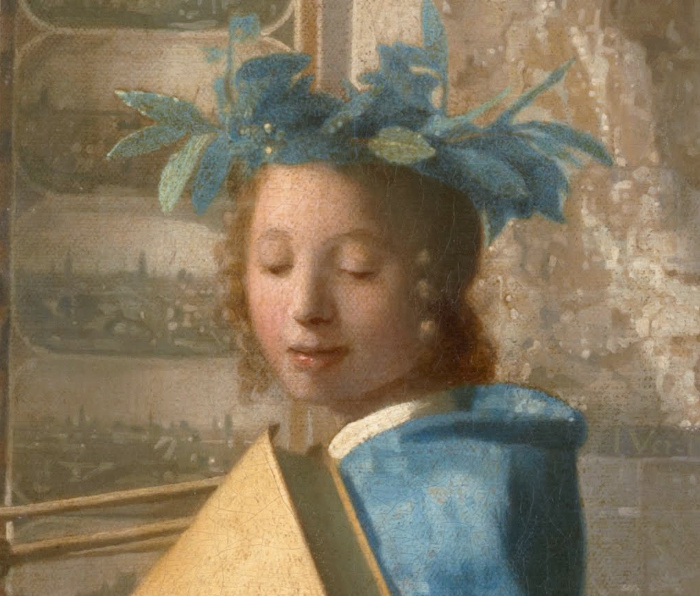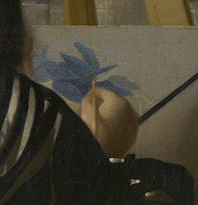Details: Vermeer's Painting Methods & Techniques
THE ART OF PAINTING
c. 1665- 1666
oil on canvas
47 1/4 x 39 3/8 in. (120 x 100 cm.)
Kunsthisrisches Museum, Vienna
glazing
A curious note in the Art of Painting is the oddly unnatural blue tone of most of the laurel wreath worn by the young model. A very ; similar effect can also be seen in the foliage of the The Little Street. In both pictures it is probable that Vermeer used a painting technique called "glazing" to obtain a desired natural green which in time has altered. The painter first modeled the leaves in various opaque blue tones which was then allowed to thoroughly dry. Afterwards he applied a thin layer of very transparent paint, in this case a yellow lake, called a "glaze." The two colors, blue and yellow, are combined optically but not physically creating a deep green natural. The blue laurel wreaths we now see are noting more the blue underpainting. The superimposed yellow lake (a fugitive pigment) has either faded with time or has been partially removed by excessive restoration.
Glazing tends to produce a rich luminous effect analogous to stained glass which cannot be achieved by direct painting with opaque paint of the same color. Other that this particular effect, it was used to obtain a number of colors which were not otherwise available to the painter, for example, ; shade of purple had to be created by the use of glazing. The final effect of glazing is very difficult to anticipate and its use is probably overestimated by modern analysis. An extremely beautiful example of glazing in Vermeer's painting is the yellow satin gown in The Love Letter.
If we carefully observe the upper part of the canvas on which the painter is working on, ; we see the same laurel wreath at the blue preparatory stage, thus Vermeer himself demonstrates the technique.


